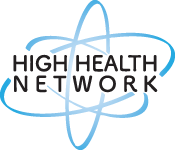Competitive Edge
To successfully manage the business issues that executives tell us are keeping them up at night, they need employees who are energetic, creative, and optimistic. They need people who can solve problems effectively and manage change. They need people who have high health and health power.
In one study, employees who have high health levels showed:
4 times less health services utilization,
6 times less lost time from work, and
8 times better work contributions than employees at low health levels (Keyes & Grzywacz, 2005).
In our own non-published data trends, we’ve found that employees with high health have three times less health services utilization, three times less lost time from work, and eight times better work contributions than those at low health levels.
Higher innovation and work performance are also seen among employees who have high levels of health and well-being (Wu et al, 2016).
Executives tell us they want more innovation for their businesses, and of course they do. It leads to a competitive edge.
Yet we regularly have focus groups with executives who continue to choose to invest exclusively in health treatment coverage for the smaller proportion of employees who generate most of the medical coverage expense. The larger proportion receives no support for health until they reach a stage of needing medical treatment. These single-focus strategies are common, but the High Health Network makes it easy for companies who want to update their strategies and provide better options for employee wellness programs.
For details get the One Sheet.
< back home

